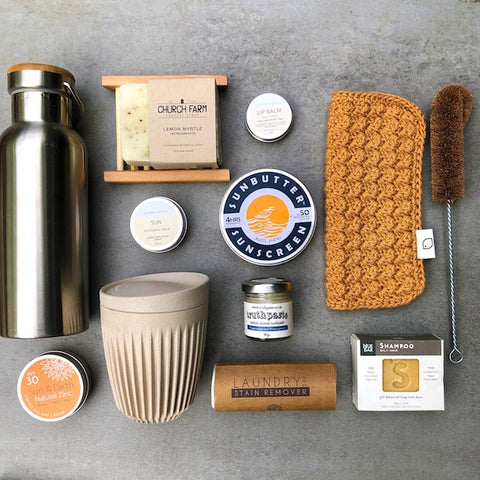How to Stop Junk Mail in Australia
by Katherine Hynes
We’ve moved around A LOT… my kids surprised me one day when they rattled off 27 different homes in three countries! No, we’re not running from the law. My husband and I work in the entertainment industry. Managing our personal mail delivery between moves definitely required some diligence. But stopping junk mail demanded a next level skill set.
With every new home, we unwillingly inherited a never ending stream of junk mail along with personally addressed letters and bills for the ‘ghost of tenants past’.
According to climate movement 1 Million Women, more than 100 million trees are destroyed each year to make junk mail and, listen to this, only 44% of junk mail is ever read. Mostly it ends up in landfill.
When you take into account the resources needed to produce and distribute junk mail (water, power, chemicals, transport etc) you quickly realise that tossing it in the recycle bin is not a solution. Stopping or at least greatly reducing junk mail is the only answer.
Thankfully there are several things Australians can do.

1. Stick a ‘No Junk Mail’, ‘No Unsolicited Mail’ or similarly worded sign or sticker on your letterbox. Make sure it’s clearly visible.
This will mostly stop Australia Post delivered catalogues and unaddressed mailings (approximately 10% of the junk mail Australians receive each year).
Please note the Australia Post website says political, educational, religious, and charitable mailings are exempt from ‘No Junk Mail’ signed letterboxes according to standards developed by the Australian Catalogue Association.
For a free ‘No Advertising Material’ sticker, send a stamped self-addressed envelope to The Distribution Standards Board (DSB), Suite 6, 151 Barkly Avenue, Richmond, VIC 3121. Stickers are also often available free of charge from your local council or for a minimal fee at hardware stores.
2. Register for the ADMA (Association for Data-driven Marketing and Advertising) ‘Do Not Mail’ registry.
This will stop addressed and unsolicited promotional mail from more than 350 corporate ADMA members and organisations.
What if you love catalogues but hate junk?
If you still want to see what the catalogues offer but wish to avoid the paper waste, register with Lasoo Online Catalogues and choose which catalogues you want to receive electronically, or just visit your favourite stores online and sign up to receive their emails.

3. Return any mail delivered to your address for unknown people.
Australia Post advises to write ‘return to sender - unknown at this address’ on the front, and slip it into a red street posting box or hand it over the counter at the post office.
4. Report when necessary. If you have a sticker or sign on your letterbox and have registered for the ‘Do Not Mail’ register and are STILL receiving junk mail, here’s what to do:
For catalogues – contact the Distribution Standards Board to lodge a complaint online or call the DSB hotline on 1800 676 136.
For junk mail from real estate agents, takeaway stores, small businesses and government organisations – unfortunately you have to contact them directly. If the mail is addressed to you, phone them and politely ask to be taken off their database. If the flyer is unaddressed and from a local business, I’ve found the most responsive way to stop deliveries is to contact them via Facebook (even better than calling or emailing). I message them with a version of the following sample script. Keeping in mind that different things motivate different people, I’ve written this message to hopefully appeal to either their financial, reputational, or environmental sensibilities.
Hi ____ For environmental reasons I have a ‘No Unsolicited Mail’ sticker on my letter box, yet I still received your ____ (brochure, flyer, fridge magnet etc).
Could you please insist your delivery person does not deliver to residents with such stickers? I’m sure you don’t want your valuable promotional budget wasted on households like mine.
Thanks so much for your understanding.
Kindest regards,
Katherine Hynes
Usually I get a quick, apologetic response with the promise to talk to the delivery service or person concerned.
However, the other day, I read a story about a woman who has a 'no junk mail' sticker on her letterbox. She continually received flyers from a real estate franchise, no matter how many times she asked them to stop. So she complained to the head office. Now she no longer gets this agent’s flyers.
Of course, it’s not just brochures and advertising material that clog up our mailboxes and waste resources. Here are tips to further reduce paper mailings:
5. If you no longer wish to receive the Yellow or White Pages you can cancel delivery by filling out this form.
6. If you no longer wish to receive your free local/community newspaper, you’ll need to contact the newspaper directly.
7. Choose to have correspondence such as bank statements and bills sent to you electronically, instead of hard copies by mail.
8. Be careful who you give your address to. Many companies on-sell personal details for marketing purposes. Read the fine print and ask the question, “Will you give or sell my personal details to a third party?”. If the answer is yes, say “no way José”.
So there you have it, 8 ways to hopefully stop or at least greatly reduce junk mail… including the 8 billion catalogues stuffed into Australian letterboxes every year. Best wishes to you and all the efforts you’re making to reduce waste.
Sign up for our newsletter and get 10% off your first order. Flat rate shipping Australia wide.
How to stop junk mail in Australia

How to stop junk mail in Australia
🌿
Katherine Hynes is an Actor, Voiceover Artist and Zero Waste advocate.
Photography: Samuel Zeller (Unsplash), Pau Casals (Unsplash), Katherine Hynes and Natanya Shearer-Stanton
